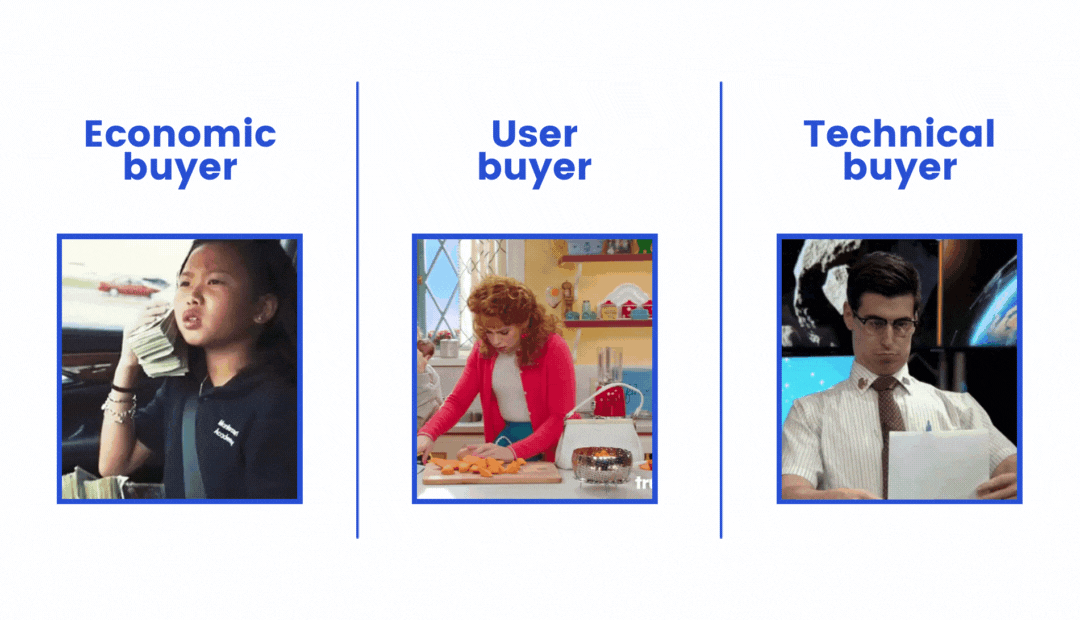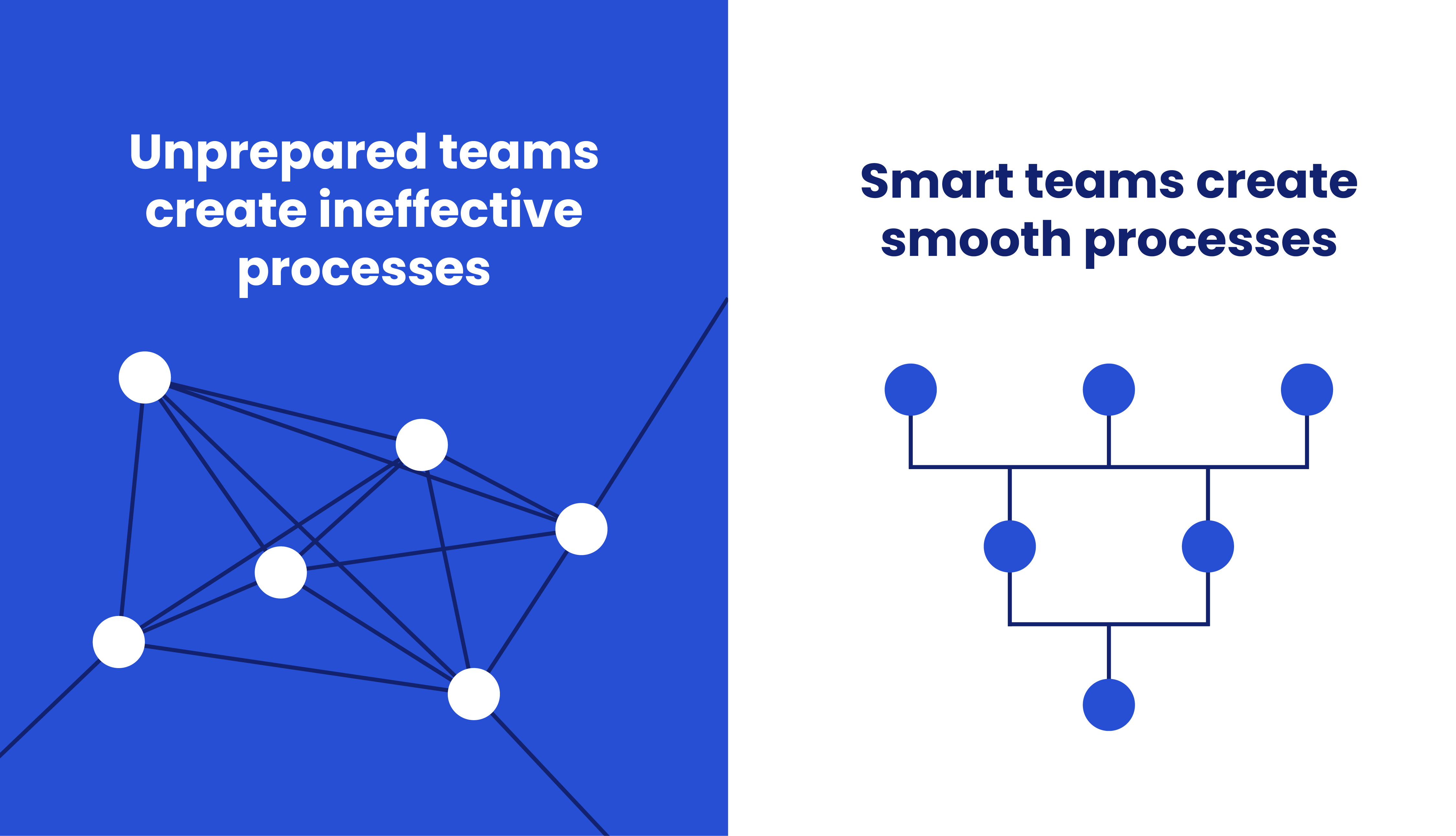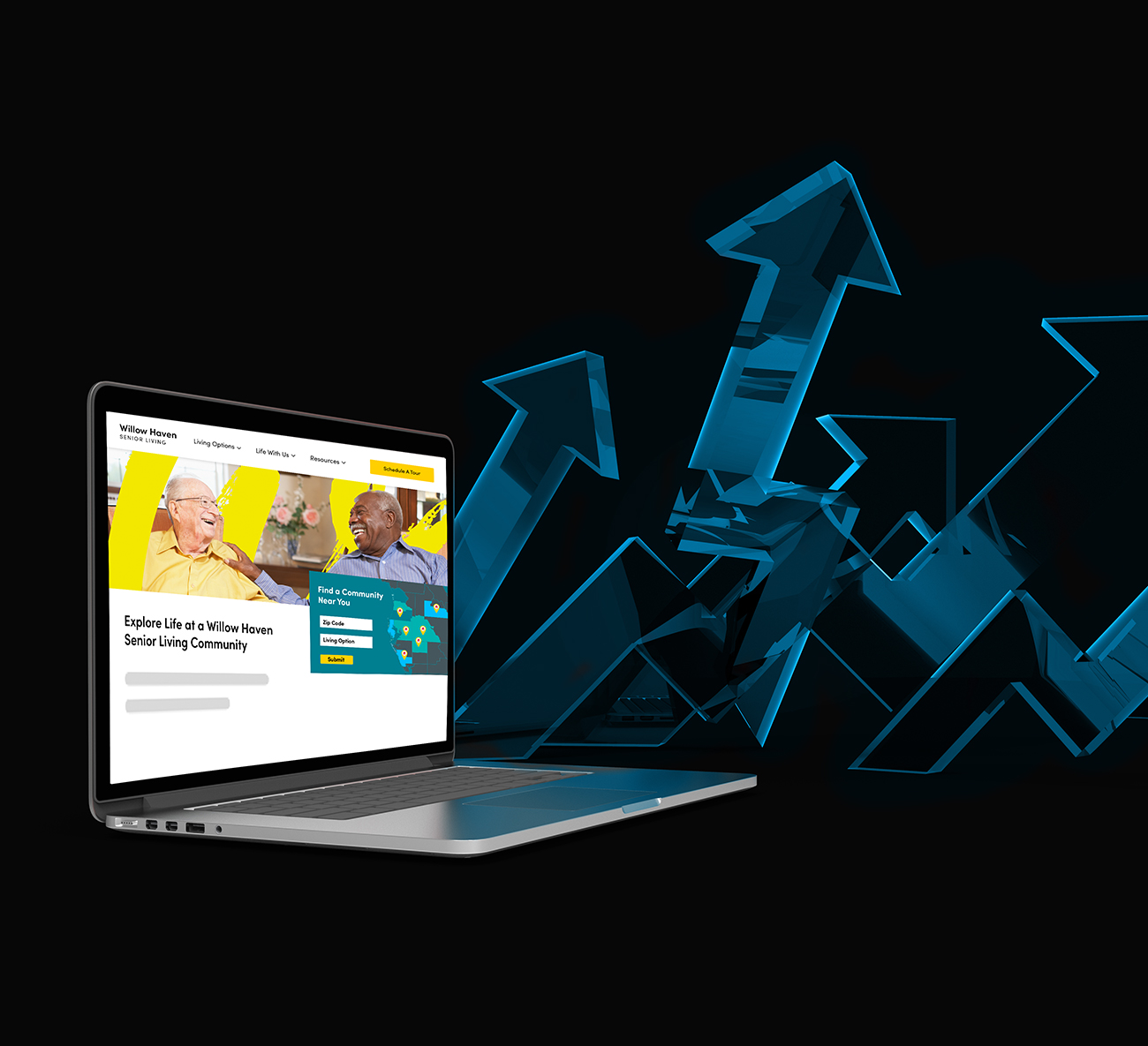Let’s face it – answering tough, high-level questions about your organization can be pretty intimidating. However, it’s an important part of the process because it forces you to look at your business through a more critical and strategic lens.
With this outlook, you can identify any misalignments, barriers, or opportunities that may have been hiding in plain sight. The process has to start somewhere, though, so we’ll walk you through the ten questions you need to answer before developing a digital marketing strategy.
#1 – What are your main business goals?
Think about all of your goals: short-term and long-term, sales and marketing, qualitative and quantitative, performance-based and outcome-oriented. Next, group similar objectives together to determine a few overarching goals.
These main business goals will provide a solid foundation for your digital strategy. Plus, your long list of goals may come in handy when you start developing targeted campaigns and other marketing materials.
#2 – How will your success be measured?
You’ve set goals for your organization but now you need to measure their success. That means identifying key performance indicators (KPIs) to track your progress. Some common ones include the ratio of marketing qualified leads to sales qualified leads, email click-through rate, number of social media impressions, or conversion rate for a new landing page.
Digital marketing is all about real-time campaign optimization, and it’s difficult to get a clear picture of how well your efforts are paying off without having specific KPIs to monitor.
#3 – What is the lifetime value of your average customer?
No business would be complete without some basic algebra. Here’s how to calculate the average lifetime value of your customer: multiply the average purchase value by the number of purchases made, then multiply that number by the customer’s lifespan.
In terms of digital marketing strategy, this number can tell you two things:
- The maximum dollar amount you should spend to generate a single qualified lead
- How extensive your buyer’s journey is from the awareness stage to actual purchase
#4 – Who do you think your target audiences are?
Yes, we said “audiences” plural. Think about the three buyer types:
- The economic buyer is the person who has the ability to make or authorize the purchase.
- The user buyer is the person who will use your product or service after the purchase decision is made.
- The technical buyer is the person who ensures all purchases follow organizational rules, terms and procedures.
If you’re exhausting all of your marketing efforts highlighting benefits for the user buyer, you’re missing the opportunity to convince the economic buyer that your solution is worth the price. That’s where targeted campaigns for multiple audiences come into play.

#5 – How were these audiences determined?
It’s fairly common for businesses to use demographics, outside agencies, Google Analytics, and social media insights to determine their audience. While that data might be helpful, it’s not an ideal place to start when defining realistic buyer personas.
Different types of buyers mean you need to use different marketing messages and audience targeting parameters to reach them. If you sell lawnmowers, you should target the end-user and the home improvement store that will sell your product.
#6 – How are you currently communicating with your audiences?
This is a simple question but it can help discover channels that are being underutilized – or channels that should be left in the past with your old marketing strategy. Look at these communication methods with your new audience insights in mind and you’ll be able to make some accurate recommendations.
#7 – What marketing, sales and digital tactics have you used?
And we mean everything! Evaluating every marketing and sales tactic you’ve used in the past can help shape your future strategy. Maybe you tried publishing magazine ads but they didn’t generate enough buzz.
Do your audiences regularly tune in to a local radio station? Is there a digital billboard next to a high-traffic freeway ramp? What about ads in the Facebook app that display near stores that are selling your product? Consider other options that are better aligned with your goals and your customers’ habits.
#8 – Do you have teams or roles in place to manage your efforts?
Let’s rephrase this question: Do you have teams or roles in place to confidently and knowledgeably manage your efforts? Hopefully, you can see the difference there.

Having the right people on your team is one thing, but providing those people with the right training, resources and support is a far more important issue. You might need to move people around or create new positions to ensure that your internal marketing team is ready for the increase in responsibilities.
#9 – Are you utilizing martech software and tools?
Many companies have embraced the two most common martech tools: customer relationship management (CRM) systems and email marketing platforms. However, we recently surveyed 200 B2B marketers and found that many teams are still lagging behind when it comes to more complex software.
In fact, 40% of marketers we surveyed said that automation tools weren’t even a part of their digital toolbelt in 2020.
This is a great time to make a list of the tools you’re currently using, the tools you need to adopt in the next few months and the “would-be-nice-to-have-one-day” tools. Then, you can start planning for team recruitment or budget allocation to help implement them.
#10 – What are your competitors doing well?
You’ve likely done your competitive research by now. Hopefully, you also have a better understanding of your organization’s strengths and weaknesses. It’s time to review what your competitors are doing and determine what missed opportunities you could help fill in the market.










